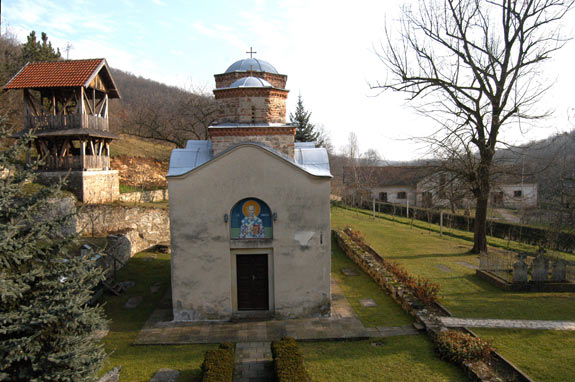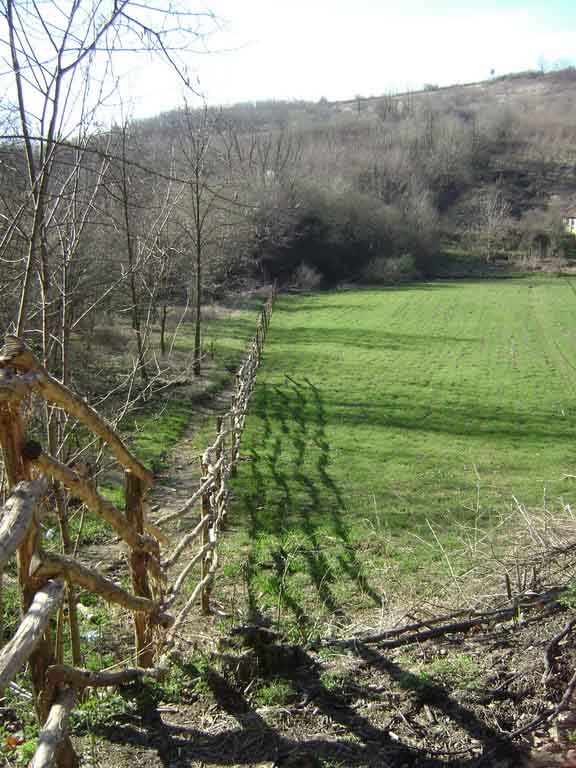For a while now, sun and clear sky are going on our hand, here in Jagodina. As spring is a perfect time for any kind of adventure, my suggestion would be local monastery Josanica. It is not far from town, just right destination for warming. Eleven kilometers far from our camp Ruza Vetrova and only nine from town center. It is easy to find if you follow local roads and signs.
Now, when distance is set, topography should be analyzed. Expect constant slight rise of ground, all manageable with small effort. Next step is choosing traveling weapon: car, motorcycle, or even your own walking feet. In this case, any pick is good enough.
Are you ready? Check your water supply, sunglasses, and comfortable footwear. Just in case, set GPS for 4870,20 – 7511,81. From town center hit west. After river Belica, take right, and soon Russian Graveyard is on your right. Make this stop and take a walk in park dedicated to Russian soldiers killed in October and November in 1944 during World War II for liberation of our town. Monument and ossuary is built after the War and is one of the kind in Central Serbia.

After this unnecessary, but pleasant rest and enjoyable walk, it is time to move on. To get to Monastery, you will be passing through local villages: Vinoraca, Deonica, Siokovac. Nice gardens, colorful orchards in full bloom and wheat fields will toggle in your sight. People are kind, so don’t hesitate to buy local goods: eggs, cheese or vegetables. In no time, while looking in curly horizon on left side of the road in front will show gate and small church. Now, get serious, and learn some history and heritage facts: Josanica is medieval monastery. It is founded in early years of fourth decade of 15th century. There are no written documents, but archaeological research and found objects are strong proof for this beliefe. Legend says, Duke Lazar Hrebljanovic built church for accidental kill of monk. It is still well known that before Monastery was built, monks or anchoret, how they were called, lived in local caves. In the seventies in 20th century, quarry was built and all caves and life that used to be in them were destroyed. Testimony to these people, who were called saints even in life, is fresco portrait of St Jovan the Gracious.
Through the years and centuries, hard time through wars and complicated history events, monastery was several times abandoned and destroyed. First known renewal, was before 1786th. From this year is first written document about Josanica. It is trustee epigraph about revival. Unfortunately, it is lost or destroyed, but its content is saved in correspondence between Joakim Vujic and Josif Veselic, both Serbian writers.
Later, during liberation from Ottomans, church was twice burned and both times restored. Cause was constant presence of brigands. Monastery sheltered both Captain Koca and Karadjordje, the great Serbian freedom fighters. In First and Second World War, there was hospital and orphanage for all who needed help.

Late 1960th and early 1970th were the years of reconstruction and conservation. Church was given its original shape and outward appearance. By looking at this small monastery church, one can find main characteristics of Morava Architectural School and great influence of Byzantine architecture. It is nave building with cross-in-square layout. Domes above narthex and nave are hold by vaults, crossed in both directions. After narthex and nave, altar is finished by apse seen in exterior. Lateral walls are decorated with three blind arcades. All elements are forming harmony for viewer eyes.
We’ll leave you here, with certain thoughts that you are on right place.



